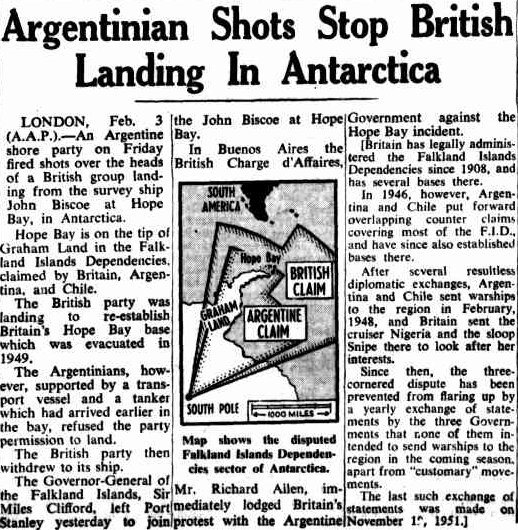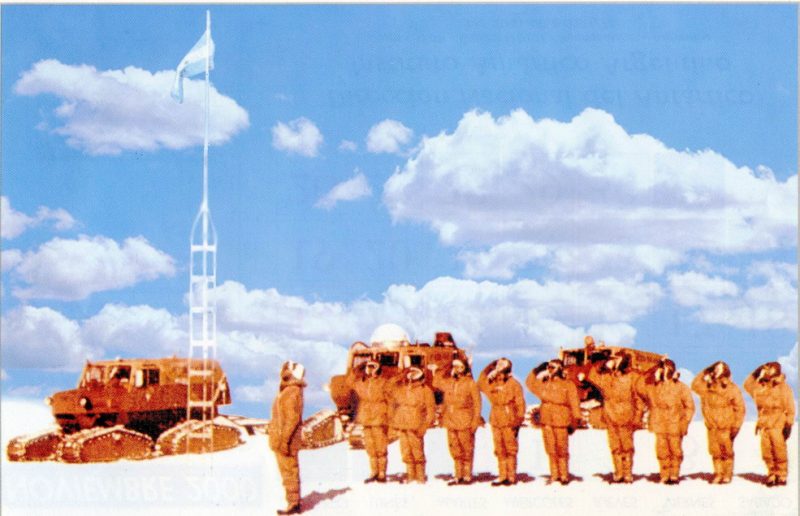We Present This Guest Blog – By Luciano Camaño
For the time being, the South Pole remains a zone of peace and science. Nevertheless, firearms were fired only once on a Friday in February 1952. It was the time before the Antarctic Treaty came to effect in 1959: for a ten-year span, Chile, Argentina, and Britain would start a mini-cold war in the southern Atlantic and adjacent areas.
During the 50s, Argentina established several bases around the peninsula after a 50-year hiatus in Antarctic exploration (The first base was established in 1903).
The said base was called San Martin, and it became the first of many bases founded with the aims of territorial occupation by Argentinian Armed Forces during the first half of the 50’s decade.
In terms of mobilization of forces, Argentina performed sea-borne patrols consisting of several ships and was the only nation of all three to have an ice breaker in the south.

Britain, on the other hand, was decreasing its commitments following the end of World War II. Priorities laid elsewhere and a remote area in the farthest reaches of the Empire wasn’t exactly one of them. Still, imperialist behavior remained a powerful drive in British policy long after its capabilities decreased.
Furthermore, if there was no response from Britain, Argentina might have become more aggressive towards the Malvinas/Falklands, something unacceptable for the prime minister Winston Churchill.
What could Britain do to stop Argentinian presence in the south? It would also occupy the frozen land with scientific bases.
A landing party without any armed personnel landed at Hope Bay from the ship ‘’Joe Biscoe’’ with the aims of reactivating a base lost in a fire in 1949. The Argentinians, already there, fired above the heads of the British landing party upon arrival on shore trying to prevent the establishment of additional British presence.
This caused diplomatic tensions between both countries throughout 1952 and a swift reply next year at Deception Island, where two Argentinian officers were forced to abandon their huts and taken back to the mainland as illegal immigrants.
What stopped this escalation into an armed conflict was a formal apology by the Argentinian Government and the preparation for the International Geophysical Year, a one-time effort by countries all over the world to conduct research about Earth, which required peaceful relations between all members.
The Antarctic Treaty of 1959 finally froze in time the reclamations of all countries for the next century. Despite this, global warming and scarcity of resources could once again turn the frozen continent into a source of conflict.
